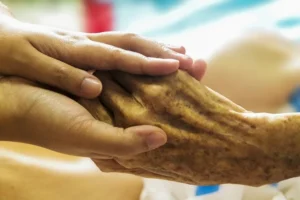Camp Lejeune Water Contamination: Lessons Learned and Preventing Future Crises
- Updated on: Feb 20, 2025
- 4 min Read
- Published on Feb 20, 2024

The water contamination at Camp Lejeune, a United States Marine Corps base in North Carolina, stands as a stark reminder of the environmental and health crises that can occur when oversight and regulation fall short. From the 1950s to the 1980s, the people living and working at Camp Lejeune were unknowingly exposed to drinking water contaminated with hazardous chemicals. This tragedy not only affected thousands of lives but also sparked a broader conversation about environmental safety, health regulations, and the accountability of institutions. This article delves into the lessons learned from the Camp Lejeune water contamination incident and explores measures to prevent future environmental health crises. Through a conversational and informative lens, we’ll uncover the significance of this event and the steps we can take to ensure a safer, healthier future for all.
The Heart of the Crisis
At the heart of the Camp Lejeune crisis was the discovery of volatile organic compounds (VOCs) in the base’s water supply, notably trichloroethylene (TCE), perchloroethylene (PCE), benzene, and vinyl chloride. These chemicals, found at concentrations up to 280 times the levels considered safe, had seeped into the water from leaking storage tanks, industrial activities, and improper disposal practices. The affected water systems supplied drinking water to residential areas, schools, hospitals, and workplaces on the base, exposing as many as one million people to these harmful contaminants over three decades.
Camp Lejeune Water Contamination: A Call to Action
The Camp Lejeune water contamination saga serves as a pivotal call to action. It highlights the urgent need for stringent environmental regulations and oversight. The discovery that water at the base was laced with dangerous levels of toxic chemicals for years without detection underscores a grave systemic failure. This incident not only sheds light on the specific challenges faced by military installations but also serves as a warning about the potential for similar crises elsewhere. It prompts a critical examination of how we monitor and manage environmental health risks, especially in communities vulnerable to industrial and military pollutants.
Understanding the Impact on Health
The health implications of the Camp Lejeune water contamination are profound and far-reaching. Studies have linked exposure to the contaminated water to a range of serious health conditions. Veterans, their families, and civilian workers who lived or worked at Camp Lejeune during the contamination period have reported a higher incidence of these conditions compared to the general population. The struggle of affected individuals for recognition and justice has brought to light the need for comprehensive health monitoring and support for communities exposed to environmental pollutants.
The Road to Regulation and Oversight
The fallout from the Camp Lejeune crisis underscored the critical need for robust environmental regulation and oversight. In response, there have been calls for stricter standards for water quality and more rigorous testing protocols, especially in areas prone to industrial and military pollution. The incident has also prompted a reevaluation of how environmental hazards are communicated to the public. Ensuring that accurate and timely information is available is essential for preventing similar tragedies. This experience highlights the importance of transparency, accountability, and community engagement in managing environmental health risks.
Preventing Future Environmental Health Crises
Learning from the Camp Lejeune incident means taking proactive steps to prevent future environmental health crises. This involves not only enhancing regulatory frameworks and oversight mechanisms but also fostering a culture of environmental stewardship and public health advocacy. Investing in advanced technologies for detecting and mitigating contamination early is crucial. Equally important is the role of community awareness and activism in holding institutions accountable. By drawing on the lessons of Camp Lejeune, we can work towards a future where such tragedies are not repeated, ensuring the safety and well-being of all communities.
Strengthening Community Advocacy
A pivotal lesson from Camp Lejeune is the power of community advocacy. Affected families and individuals became formidable advocates for change, pushing for investigations, legislation, and compensation. Their efforts underscore the importance of community involvement in environmental health issues. Empowering communities with the knowledge and tools to advocate for their health and environment is crucial. It means providing access to information, supporting grassroots movements, and encouraging civic engagement. When communities are informed and involved, they can be a significant force in driving policy changes and ensuring accountability.
Enhancing Scientific Research and Monitoring
The contamination at Camp Lejeune highlighted the need for ongoing scientific research and monitoring to understand the long-term effects of exposure to hazardous substances. Investing in epidemiological studies and environmental monitoring can help identify potential health risks before they escalate into crises. This proactive approach allows for timely interventions and the development of strategies to mitigate exposure risks. Moreover, it contributes to a broader scientific understanding of how environmental factors affect health, guiding public health policies and regulations.
Promoting Interagency Collaboration
Effective prevention of environmental health crises requires collaboration across various government agencies and departments. The Camp Lejeune case demonstrated how siloed efforts can lead to gaps in oversight and response. Promoting interagency collaboration ensures a coordinated approach to environmental health, from regulation and monitoring to response and remediation. By working together, agencies can leverage their expertise and resources for more comprehensive environmental health strategies. This collaborative model should also extend to partnerships with non-governmental organizations, academic institutions, and international bodies.
Implementing Advanced Technologies
Leveraging advanced technologies for environmental monitoring and data analysis can play a crucial role in preventing future crises. Technological innovations in sensors, data analytics, and modeling can detect contaminants at lower levels and predict their potential impacts on health and the environment. These technologies enable more effective and efficient monitoring of water and air quality, offering an early warning system for potential hazards. By investing in these technologies, we can improve our capacity to identify, assess, and respond to environmental health risks more swiftly and accurately.
Fostering Global Learning and Collaboration
The lessons from Camp Lejeune are not just relevant for the United States but for communities worldwide facing environmental health risks. Sharing knowledge, experiences, and best practices on a global scale can help prevent similar tragedies elsewhere. International collaboration can facilitate the development of global standards for environmental health, promote the exchange of research and technology, and support countries with limited resources to address environmental challenges. This global perspective is essential for tackling environmental health issues that know no borders.
Conclusion
The water contamination crisis at Camp Lejeune serves as a profound learning moment for environmental health and safety. It reminds us of the devastating consequences of neglect and the importance of vigilance, advocacy, and collaboration in preventing future crises. By drawing on the lessons learned, strengthening regulations, empowering communities, and investing in research and technology, we can safeguard our environment and health. Let the story of Camp Lejeune galvanize us into action, ensuring that the legacy of those affected is a safer, healthier future for all. Together, we can turn the lessons of the past into the foundations for a better tomorrow, where such tragedies become distant memories rather than recurring fears.












